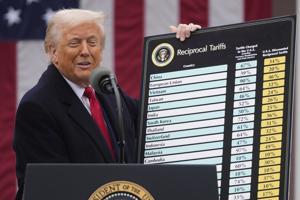As the August 1st deadline for former U.S. President Donald Trump’s latest tariffs rapidly approaches, the global economic landscape remains a complex web of newly forged trade deals and ongoing negotiations. This period highlights a dynamic approach to international commerce, where the threat of heightened import taxes has served as a catalyst for numerous bilateral and multilateral discussions aimed at reshaping global trade policy.
The administration initially introduced sweeping import taxes on goods from various nations, which included “reciprocal rates” that have since seen multiple postponements. This strategy was designed to push countries towards new economic negotiations and facilitate specific country-by-country agreements, with an ambitious goal of reaching comprehensive trade resolutions.
Among the initial outcomes were significant agreements with the United Kingdom and Vietnam. The U.K. deal, while announced with fanfare, saw delays in the implementation of tariff exemptions on steel and aluminum, ultimately still facing a 25% import tax, albeit spared from more punitive levies. The Vietnam accord set a 20% levy on Vietnamese exports to the U.S., significantly less than initially proposed, but introduced a 40% tax on “transshipping” to counter circumvention of Chinese tariffs.
More recently, the United States finalized an agreement with South Korea, imposing a 15% tariff on goods while securing commitments for South Korean investment in U.S. energy resources and other strategic sectors. Concurrently, a crucial understanding was reached with the European Union, averting the threat of a 30% tariff by establishing a 15% tariff on most European goods, coupled with agreements on zero tariffs for “strategic” items and substantial European investments in the U.S.
Further progress in US trade deals includes a framework with Japan, which saw a reduction from previously threatened rates to a 15% tariff, alongside pledges for significant Japanese investment and market openness for American autos and rice. This provided relief for major automakers who had been facing higher levies on vehicle parts. Similarly, a modest 1% tariff reduction was announced for the Philippines, with ongoing discussions about market access for American automobiles.
Indonesia also saw a reduction in forthcoming U.S. tariffs to 15%, with promises of duty-free entry for over 99% of U.S. products into the Southeast Asian nation. These economic negotiations are ongoing, as Indonesian officials aim for further reductions. The broader context of these bilateral agreements reflects a focused effort to realign trade balances and secure economic advantages for the United States.
The complex relationship with China remains a focal point within international relations and the global economy. Following a period of peak tariffs, a 90-day truce saw reductions in mutual levies. While details of a subsequent framework deal have begun to emerge, key aspects, including the timing of implementation and extensions for new tariffs, remain under discussion, underscoring the delicate nature of these high-stakes trade policy dialogues.
The collective sum of these bilateral agreements and frameworks indicates a strategic push to redefine global commerce through targeted economic negotiations. As the August 1st deadline passes, the ultimate impact on the global economy and the long-term trajectory of these US trade deals will continue to unfold, shaping future international relations and trade policy for years to come.






Leave a Reply